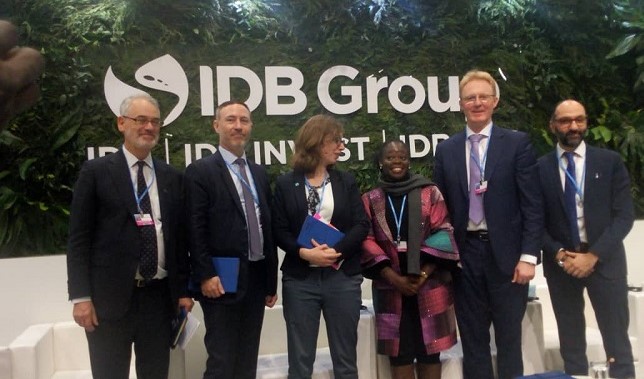At the 25th session of the Conference of the Parties (COP25) to the UN Framework Convention on Climate Change (UNFCCC) held in December 2019 in Madrid, Spain, Nigeria shared how the issuance of its Sovereign Green Bonds has enhanced efforts towards the drive for a low-carbon economy.

Senior Scientific Officer, Department of Climate Change in the Federal Ministry of Environment, Mrs. Adesola Olatunde, told co-panellists and audience at a side-event that Nigeria embraced Green Bonds as an innovative and alternate way of raising domestic finance to fund its Nationally Determined Contributions (NDCs).
NDCs embody efforts by Nigeria to reduce national emissions and adapt to the impacts of climate change.
“The Green Bond is a financing mechanism to facilitate and assist Nigeria meet its Nationally Determined Contribution target and low carbon pathway for socio-economic development in line with the Economic Recovery Growth Plan (ERGP),” she said, adding that the issuance of the Green Bond also began the process of greening the federal budget upon the signing and ratification of the Paris Agreement and the commitment target of its NDCs.
Under the NDCs, Nigeria committed to reduce its emissions by 20% unconditionally and 45% conditionally.
She stressed that, by the issuance of the Green Bond, Nigeria is in line with the flow towards low-carbon, climate resilient opportunities and away from carbon intensive, polluting activities or those that exacerbate climate vulnerability leading to poverty, insecurity and reduced health quality.
The Green Bonds market, she added, has created an opportunity to increase the profile of “green” projects in Nigeria and provide a platform for the government to pull local and international funds.
According to her, the arrangement is a synergy between Federal Ministry of Environment, the Debt Management Office (DMO) (which was mandated by the Minister of Finance to drive the process), and Office of the Accountant-General of the Federation (OAGF), while the Nigeria Erosion & Watershed Management Project (NEWMAP) was developed to explore and channel resources into viable green projects.
“Support from the World Bank has assisted the country in the identification and selection of viable projects for implementation from the proceeds of the issuances,” Olatunde disclosed, pointing out that, to enable the Federal Government draw on a wide arrange of expertise in progressing and developing the issuance of the bond, the Ministries of Environment and Finance established a Green Bond Advisory Group (GBAG).
Made up of development partners such as the World Bank, DfID, AfDB and IFC; and capital market operators like the Nigeria Stock Exchange, Capital Assets, Chapel Hill Denham, Stanbic IBTC and Climate Bonds Initiative, the GBAG is said to be the interface between the development partners and the capital market in oversight functions.
The first issuance of the Green Bond to the tune of N10.69 billion ($29 million) took place in December 2017 and was fully subscribed. The list of projects funded are in the Energy and Environment sector such: Renewable Energy Mini Utilities (REMU), Energising Education Programme (EEP), and Afforestation Programme.
The second issuance was in June 2019 amounting to N15 billion, with projects across sectors like Water, Transport, Agriculture, Power and Environment.
Olatunde however highlighted challenges encountered by the nation in the process, saying that they can be overcome by building capacity towards meeting reporting requirements; enhancing synergy with relevant stakeholders, most especially the corporates and sub-nationals; and, enhancing awareness to the polity.
